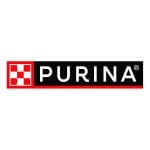Finding a good leash, collar, or harness for your dog can be extremely challenging. There are a variety of different tools to choose from, and some are better than others. We talked to one trainer to get a rundown of which are recommended and which ones should be avoided.
The Good
Flat Buckle Collar
Flat buckle collars are the most commonly used collar. You can find them in almost any store in a wide variety of colors which makes them popular among dog owners. This is a great tool for keeping your pet secure, but they do apply pressure to their trachea until they learn to walk politely on leash without pulling. Most pet owners do not realize this, but flat buckle collars are a potential choking hazard, and as such should not be left on while your pet is unattended or during play with other animals.
Martingale Collar (AKA the Humane Choke Chain, No Slip Collar, or Limited Slip Collar)
Martingale collars come in a wide variety of colors just like flat buckle collars, but are not as common. This is a preferred collar for dog breeds that have narrower heads than necks such as Greyhounds, Salukis, and Whippets. Unlike flat buckle collars, martingale collars have a small loop that contains a D ring to attach your leash to. When a dog pulls or tries to back out of the collar, it tightens around the dog’s neck, constricting just enough to keep the dog contained making it a great tool for dogs who may be a flight risk. Due to the size of the loop, martingale collars can only tighten to a certain degree, unlike choke chains which have no safety mechanism to prevent choking.
Front Clip Harnesses
The front clip harness is a great tool for anyone who has a dog struggling with their on leash manners. Similar to the martingale collar, there is a loop with a D ring, but it aligns with the breast bone. This loop, when a dog pulls, causes them to swing back around towards your legs away from what they were pulling towards. This type of harness is not ideal for dogs who are broad or square chested.
Freedom Harnesses
Freedom Harnesses feature a two point leash system, giving you more control over your dog. This type of harness is preferred over the front clip harness for dogs who are broad or square chested. This harness is also great for dogs who can escape other equipment. The idea behind this harness is similar to the front clip harness in the fact that it helps maneuver the dog back around to you when it pulls. This makes it a great tool for dogs working on their leash manners. Unfortunately, you will not find this harness in any standard pet store so you will need to seek it out online if you are interested in purchasing it.
Back Clip Harness
Back clip harnesses are great for dogs who are a flight risk or can slip out of other equipment. There’s a reason mushers use back clip harnesses for their dogs pulling sleds, and the reason is the oppositional reflex. The oppositional reflex in laymen terms means there is a force pulling the dog one way making it want to pull in the opposite direction. Due to this, it is not a tool recommended for dogs who are working on their leash manners.
Harness Lead (AKA Figure 8 Harness)
Harness leads are another great tool for dogs who may be a flight risk or can slip out of other equipment. It can also be used as a slip lead making it a versatile tool.
Traffic Leashes
Traffic leashes are a great tool when working with difficult to control dogs or reactive dogs. This type of leash has not one, but two handles giving you more control on the distance between you and your dog.
Chain Leashes
Chain leashes are usually made out of rust resistant metal, which makes them a great choice for dogs who may chew through a normal nylon leash.
Head Halter/Collar (AKA the Gentle Leader)
Head halters are a great tool for controlling dogs, extra-large dogs, and reactive dogs. Head halters are very similar to the halters used on horses as they both use pressure points to give more control over the animal. However, you must give your dog time to desensitize it before use or they may injure themselves by trying to scratch/rub it off.
The Bad
Citronella Collars
Citronella collars are considered a form of punishment and have a long lasting effect. Unfortunately, this type of collar delivers a lingering spray of citronella when it detects certain behavior (i.e. barking) or is remotely activated. As stated, the citronella lingers even after the behavior has stopped, and due to this the dog can learn to associate the aversive smell of citronella with other things besides the unwanted behavior.
Flexi Lead (aka Retractable leashes)
Flexi leads can be a great tool when working on recalls but can also be a safety hazard. This type of leash can cause rope burns and lacerations. This can occur if the leash gets wrapped around you or your dog and he/she takes off. Another risk of this type of leash is delayed reaction times due to the distance between yourself and your dog. For example, your dog is 15-26 feet away from you and approaches a dog who is not dog friendly, it could result in a scuffle. Because of the distance, you cannot safely get your dog out of the way in time. If this is a tool you do decide to use, always be conscious of your surroundings and of the people/animals around you.
The Ugly
Choke Chain
Choke chains are a controversial training tool, and you will most likely hear different opinions from a variety of dog trainers regarding their use. This is a commonly used training tool when showing dogs as it helps keep the dog’s head held high. A proper fitting Choke Chain will sit high on the neck just behind the ears, but some users of this training tool are uneducated or misinformed on the proper placement. This could lead to a higher chance of creating a harmful or even deadly situation. Unlike the martingale collar, choke chains do not have a safety mechanism. This means that they can continue to tighten to the point it chokes your dog. This is considered a form of punishment and as such there is an increased risk that use of this item could lead to more severe behavior issues.
Prong Collars (AKA the Pinch Collar)
Prong collars are another controversial training tool in the dog training world. Just like the choke chain, you will hear different opinions from different dog trainers. This training tool, in the wrong hands, can be dangerous and cause injury to your dog (not just physical, but mental as well). Prong collars, when properly fitted, should sit directly behind the ears, but some users of this training tool are uneducated or misinformed on the proper placement. It is very common to see Prong Collars sitting low on the neck, but this can lead to potential injury. This is another form of punishment, and as such there is an increased risk that use of this item could lead to more severe behavior issues.
Modified Prong Collars
Modified prong collars are not much different from regular prong collars. The difference lies in the material that is used to make the product and the fact it does not pinch as much. Modified prong collars are usually made out of hard plastic. This alternative option may not look as dangerous, but they are still a form of punishment, and as such there is an increased risk that use of this item could create other more severe behavior issues.
Electronic Collars
Electronic collars are one of the most controversial training tools in the dog training world. Just like the choke chain and prong collar, you will get different viewpoints from different trainers. This is another training tool that, in the wrong hands, can be dangerous and cause injury to your dog (not just physical, but mental as well). Electronic collars can be activated remotely and/or detect when a dog is performing an unwanted behavior (i.e. barking). When the electronic collar is activated, it delivers a beep, vibrate, and/or shock. It is considered a form of punishment and as such there is an increased risk that use of this item could lead to more severe behavior issues.
Please see the AVSAB’s (American Veterinary Society of Animal Behavior) stance on punishment to learn more about why punishment is not the answer or solution to your pets training.




Last Updated: May 26, 2022 by vbspcaadmin
Learning About Leashes — The Good, The Bad and The Ugly
Finding a good leash, collar, or harness for your dog can be extremely challenging. There are a variety of different tools to choose from, and some are better than others. We talked to one trainer to get a rundown of which are recommended and which ones should be avoided.
The Good
Flat Buckle Collar
Flat buckle collars are the most commonly used collar. You can find them in almost any store in a wide variety of colors which makes them popular among dog owners. This is a great tool for keeping your pet secure, but they do apply pressure to their trachea until they learn to walk politely on leash without pulling. Most pet owners do not realize this, but flat buckle collars are a potential choking hazard, and as such should not be left on while your pet is unattended or during play with other animals.
Martingale Collar (AKA the Humane Choke Chain, No Slip Collar, or Limited Slip Collar)
Martingale collars come in a wide variety of colors just like flat buckle collars, but are not as common. This is a preferred collar for dog breeds that have narrower heads than necks such as Greyhounds, Salukis, and Whippets. Unlike flat buckle collars, martingale collars have a small loop that contains a D ring to attach your leash to. When a dog pulls or tries to back out of the collar, it tightens around the dog’s neck, constricting just enough to keep the dog contained making it a great tool for dogs who may be a flight risk. Due to the size of the loop, martingale collars can only tighten to a certain degree, unlike choke chains which have no safety mechanism to prevent choking.
Front Clip Harnesses
The front clip harness is a great tool for anyone who has a dog struggling with their on leash manners. Similar to the martingale collar, there is a loop with a D ring, but it aligns with the breast bone. This loop, when a dog pulls, causes them to swing back around towards your legs away from what they were pulling towards. This type of harness is not ideal for dogs who are broad or square chested.
Freedom Harnesses
Freedom Harnesses feature a two point leash system, giving you more control over your dog. This type of harness is preferred over the front clip harness for dogs who are broad or square chested. This harness is also great for dogs who can escape other equipment. The idea behind this harness is similar to the front clip harness in the fact that it helps maneuver the dog back around to you when it pulls. This makes it a great tool for dogs working on their leash manners. Unfortunately, you will not find this harness in any standard pet store so you will need to seek it out online if you are interested in purchasing it.
Back Clip Harness
Back clip harnesses are great for dogs who are a flight risk or can slip out of other equipment. There’s a reason mushers use back clip harnesses for their dogs pulling sleds, and the reason is the oppositional reflex. The oppositional reflex in laymen terms means there is a force pulling the dog one way making it want to pull in the opposite direction. Due to this, it is not a tool recommended for dogs who are working on their leash manners.
Harness Lead (AKA Figure 8 Harness)
Harness leads are another great tool for dogs who may be a flight risk or can slip out of other equipment. It can also be used as a slip lead making it a versatile tool.
Traffic Leashes
Traffic leashes are a great tool when working with difficult to control dogs or reactive dogs. This type of leash has not one, but two handles giving you more control on the distance between you and your dog.
Chain Leashes
Chain leashes are usually made out of rust resistant metal, which makes them a great choice for dogs who may chew through a normal nylon leash.
Head Halter/Collar (AKA the Gentle Leader)
Head halters are a great tool for controlling dogs, extra-large dogs, and reactive dogs. Head halters are very similar to the halters used on horses as they both use pressure points to give more control over the animal. However, you must give your dog time to desensitize it before use or they may injure themselves by trying to scratch/rub it off.
The Bad
Citronella Collars
Citronella collars are considered a form of punishment and have a long lasting effect. Unfortunately, this type of collar delivers a lingering spray of citronella when it detects certain behavior (i.e. barking) or is remotely activated. As stated, the citronella lingers even after the behavior has stopped, and due to this the dog can learn to associate the aversive smell of citronella with other things besides the unwanted behavior.
Flexi Lead (aka Retractable leashes)
Flexi leads can be a great tool when working on recalls but can also be a safety hazard. This type of leash can cause rope burns and lacerations. This can occur if the leash gets wrapped around you or your dog and he/she takes off. Another risk of this type of leash is delayed reaction times due to the distance between yourself and your dog. For example, your dog is 15-26 feet away from you and approaches a dog who is not dog friendly, it could result in a scuffle. Because of the distance, you cannot safely get your dog out of the way in time. If this is a tool you do decide to use, always be conscious of your surroundings and of the people/animals around you.
The Ugly
Choke Chain
Choke chains are a controversial training tool, and you will most likely hear different opinions from a variety of dog trainers regarding their use. This is a commonly used training tool when showing dogs as it helps keep the dog’s head held high. A proper fitting Choke Chain will sit high on the neck just behind the ears, but some users of this training tool are uneducated or misinformed on the proper placement. This could lead to a higher chance of creating a harmful or even deadly situation. Unlike the martingale collar, choke chains do not have a safety mechanism. This means that they can continue to tighten to the point it chokes your dog. This is considered a form of punishment and as such there is an increased risk that use of this item could lead to more severe behavior issues.
Prong Collars (AKA the Pinch Collar)
Prong collars are another controversial training tool in the dog training world. Just like the choke chain, you will hear different opinions from different dog trainers. This training tool, in the wrong hands, can be dangerous and cause injury to your dog (not just physical, but mental as well). Prong collars, when properly fitted, should sit directly behind the ears, but some users of this training tool are uneducated or misinformed on the proper placement. It is very common to see Prong Collars sitting low on the neck, but this can lead to potential injury. This is another form of punishment, and as such there is an increased risk that use of this item could lead to more severe behavior issues.
Modified Prong Collars
Modified prong collars are not much different from regular prong collars. The difference lies in the material that is used to make the product and the fact it does not pinch as much. Modified prong collars are usually made out of hard plastic. This alternative option may not look as dangerous, but they are still a form of punishment, and as such there is an increased risk that use of this item could create other more severe behavior issues.
Electronic Collars
Electronic collars are one of the most controversial training tools in the dog training world. Just like the choke chain and prong collar, you will get different viewpoints from different trainers. This is another training tool that, in the wrong hands, can be dangerous and cause injury to your dog (not just physical, but mental as well). Electronic collars can be activated remotely and/or detect when a dog is performing an unwanted behavior (i.e. barking). When the electronic collar is activated, it delivers a beep, vibrate, and/or shock. It is considered a form of punishment and as such there is an increased risk that use of this item could lead to more severe behavior issues.
Please see the AVSAB’s (American Veterinary Society of Animal Behavior) stance on punishment to learn more about why punishment is not the answer or solution to your pets training.
Category: VBSPCA News Tags: Dog, harness, leash
Search
Ways to Give
Annual Partners
To view our Donor Privacy Policy, click here.